This article was medically reviewed by Luba Lee, FNP-BC, MS. Luba Lee, FNP-BC is a Board-Certified Family Nurse Practitioner (FNP) and educator in Tennessee with over a decade of clinical experience. Luba has certifications in Pediatric Advanced Life Support (PALS), Emergency Medicine, Advanced Cardiac Life Support (ACLS), Team Building, and Critical Care Nursing. She received her Master of Science in Nursing (MSN) from the University of Tennessee in 2006.
There are 11 references cited in this article, which can be found at the bottom of the page.
wikiHow marks an article as reader-approved once it receives enough positive feedback. This article received 11 testimonials and 95% of readers who voted found it helpful, earning it our reader-approved status.
This article has been viewed 332,974 times.
A urinary tract infection occurs when bacteria (usually from the perineum) reaches the bladder through the urethra. The infection can occur spontaneously, but sexual intercourse, use of a diaphragm and infrequent urination also increases the risk of getting UTI for women. The bacteria causes inflammation in the urethra and the bladder, which can lead to mild or severe pain. Abrupt onset of symptoms may include difficulty urinating, urgency, increased frequency, heaviness in your lower abdomen, cloudy and sometimes bloody urine. Fever is not common with UTI, but is possible. Pain relievers and other pain management techniques can only help for the short term, so methods of treatment for your UTI are more helpful in pain management than simple medications. Learn to alleviate the pain of a UTI while you wait to see your health care provider.
Steps
Using Fluids
-
1Drink plenty of fluids. Drinking more fluids will help you to flush out the bacteria from your bladder and urethra and prevent your UTI from getting worse. This can help lessen discomfort or pain caused during urination.[1]
- Drink enough fluid for your urine to be light yellow. The urine may not be clear no matter how much you drink, and may instead be cloudy from the infection or light bleeding. Strive for urine that is light straw yellow.
- Drinking plenty of fluids will also flush bacteria out of your bladder and help speed the healing process.
-
2Stay away from the four Cs. Certain foods will irritate your bladder and make you want to urinate more often. Try to avoid the four Cs: caffeine, carbonated beverages, chocolate, and citrus.[2]
- While you have a UTI, eliminate these foods from your diet. Reintroduce them into your diet slowly after the pain and the urge for frequent urination has gone away.
Advertisement -
3Drink cranberry or blueberry juice. Cranberry and blueberry may be helpful when you have a UTI because they contain elements that will help the bacteria not stick to the walls of the bladder or urethra. This may help reduce inflammation, infection, and recurring infections.
- Try to get cranberry and blueberry juice with as much percentage of juice as possible. There is pure, 100% cranberry juice available, so try to find it. Also look for juices without added sugars or high fructose corn syrup. Cranberry juice cocktail can have as little as 5% juice, but up to 33%, as well as artificial or added sweeteners and won’t help as much as 100% pure cranberry or blueberry juices. Try to get the purest form you can.
- You can also take cranberry extract as a pill supplement. This is a good alternative if you want to reduce the amount of sugar you ingest.[3] [4] Make sure to follow the supplement directions.
- Don’t use the supplement if you are allergic to cranberry juice. Speak with your doctor before taking a supplement if you are pregnant, nursing, or planning a pregnancy.
- Don’t take a cranberry supplement or drink cranberry juice if you are taking a blood thinner, such as Warfarin.[5]
- Cranberry juice and extract can be used during an infection and as a preventative measure.
-
4Drink ginger tea. Ginger tea can help alleviate the inflammation. It can also help reduce any nausea you feel. You can also take a supplement. Cooking with ginger spice doesn’t have the same effectiveness as a tea or supplement because it doesn’t provide the same concentrated amount.
- Check with a pharmacist or physician if you have medical conditions or are taking medications before incorporating ginger into your diet. It can interact with certain medications and supplements.
- Ginger can cause mild heartburn and diarrhea if taken in high doses. A high dose is considered more than two cups of tea per day or more than the recommended amount of supplements.
- Don’t take ginger root, ginger tea, or supplements if you have gallstones, will have surgery soon, are pregnant, breastfeeding, or intend to become pregnant without discussing with your doctor. Don’t take ginger root, tea, or supplements if you have a bleeding disorder or are taking blood thinners.
Making Lifestyle Changes
-
1Urinate when you feel the need. Although urination can be painful with a UTI, make sure to urinate when you feel the urge. If you are drinking plenty of fluids, you will probably need to urinate every hour or two. Don’t hold it in.
- Holding your urine keeps the bacteria in the bladder, which encourages them to reproduce.
-
2Use a heating pad. To help relieve the pain or discomfort on your abdomen and lower back, place a heating pad on it. Make sure the heating pad is warm and not hot. Do not apply it directly to your skin because it can burn the skin. Place a towel or other type of cloth between the pack and your skin.[6]
- To make a heating pad at home, wet a washcloth and then warm it in the microwave. After taking it out of the microwave, put the cloth in a plastic bag. Don’t place it directly on the skin.
- Do not use for more than 15 minutes. You can burn your skin. Use for less time if you use a higher setting.
- If you use the heating pad to relieve UTI pain at night, make sure you turn it off before you go to sleep.
-
3Take a baking soda bath. Baking soda can help reduce the pain of a UTI. Place baking soda in the tub and fill it with just a little bit of water. It should be enough so that your bottom and urethra are covered.
- You can also buy a product, called a sitz bath, which is specifically made to place inside your toilet. This is useful if you don’t want to or have the time to take the bath in a normal tub. [7]
-
4Take over-the-counter medication for bladder spasm. Medication containing phenazopyridine can help to alleviate pain associated with bladder spasms, as they can numb your urethra and bladder to prevent burning during urination. One such medication is Pyridium, which can be taken at 200 mg three times a day as needed for up to two days. Another OTC medicine is Uristat. These medications will turn urine red or orange.
- Be aware that if you start taking medications containing phenazopyridine, your medical provider won’t be able to check your urine for UTI using a dipstick, as the test strip will turn orange.
- You can also take ibuprofen (Advil) or naproxen (Aleve) for the pain; however, the pain suffered during urination will persist, as these do not have the same numbing effect as phenazopyridine.
- If you have extreme pain, your doctor may prescribe you a prescription analgesic. These are used for a short period of time and are paired with antibiotics, which will eliminate the pain and the need for pain medications quickly after you start taking them.[8]
Preventing Urinary Tract Infections
-
1Wear cotton underwear. To help prevent a UTI from developing, wear cotton underwear. Nylon underwear traps moisture, which provides a perfect environment for bacterial growth.[9] Although this growth happens outside the urethra and bladder, the bacteria can travel up the urethra.
-
2Stay away from perfumed bubble bath. Women and girls should not take baths with perfumed bubble bath soap. Perfumed bubble bath soap can cause inflammation of the urethra, which can provide a good environment for bacterial growth.
-
3Wipe to reduce bacteria in the urethra. Women and girls should wipe from front to back to prevent bacteria from your stool and anus being introduced into the urethra. Your stool is rich in bacteria necessary for the digestion of your food, but shouldn’t get into your bladder.[10]
-
4Urinate after sex. Another way that bacteria can get introduced to your urinary tract is through sex. To prevent bacteria buildup, urinate right after you have sex. This will flush the urethra of any bacteria that may have gotten inside it during intercourse.[11]
Understanding Urinary Tract Infections
-
1Recognize the symptoms. There are some symptoms that are common for UTIs. These include:[12]
- A strong desire or urge to urinate frequently
- A burning sensation or burning pain during urination
- Passing small amounts of urine frequently
- Red, pink, or coca-cola colored urine, which indicate the presence of blood in the urine
- Pelvic pain in the center of the abdomen around the pubic bone in women
- Strong smelling urine
-
2Call a doctor. To reduce the possibilities of permanent damage, you need to know when to contact the physician. Unless your symptoms disappear within 24 hours with home treatments, it is very important to see your physician for antibiotic treatment. Reducing the pain of a UTI does not mean you have cured it. If you do not see a doctor, you can develop a kidney infection. Most UTIs do not go away on their own.[13]
- Your physician can prescribe antibiotics to kill the bacteria causing the infection. Take the entire bottle of antibiotics, even though the pain and burning lessens, because the bacterial growth has not been eliminated.
- Follow up with your primary care provider if symptoms do not improve in three days. You may need gynecological exam if you are sexually active.
-
3Determine if you have recurrent infections. Some women can experience recurrent infections. Three urinary tract infections or more are categorized as recurrent infections.
- This can be caused by a lack of not emptying your bladder completely each time you urinate. Urine that remains in the bladder after urinating can significantly increase the risk of experiencing recurring UTIs.[14]
- This may be from a structural abnormality in the lower urinary tract. You can schedule an ultrasound or CT scan to check for abnormalities.
Expert Q&A
-
QuestionWhat is the easiest way to help an UTI?
 Luba Lee, FNP-BC, MSLuba Lee, FNP-BC is a Board-Certified Family Nurse Practitioner (FNP) and educator in Tennessee with over a decade of clinical experience. Luba has certifications in Pediatric Advanced Life Support (PALS), Emergency Medicine, Advanced Cardiac Life Support (ACLS), Team Building, and Critical Care Nursing. She received her Master of Science in Nursing (MSN) from the University of Tennessee in 2006.
Luba Lee, FNP-BC, MSLuba Lee, FNP-BC is a Board-Certified Family Nurse Practitioner (FNP) and educator in Tennessee with over a decade of clinical experience. Luba has certifications in Pediatric Advanced Life Support (PALS), Emergency Medicine, Advanced Cardiac Life Support (ACLS), Team Building, and Critical Care Nursing. She received her Master of Science in Nursing (MSN) from the University of Tennessee in 2006.
Board-Certified Family Nurse Practitioner The easiest way to help to clear UTI is to drink plenty of fluids — including pure cranberry or blueberry juices — and most importantly take an entire course of antibiotic prescribed by your healthcare provider.
The easiest way to help to clear UTI is to drink plenty of fluids — including pure cranberry or blueberry juices — and most importantly take an entire course of antibiotic prescribed by your healthcare provider. -
QuestionHow long should it take my urinary tract infection to clear after using Macrodantin?
 Luba Lee, FNP-BC, MSLuba Lee, FNP-BC is a Board-Certified Family Nurse Practitioner (FNP) and educator in Tennessee with over a decade of clinical experience. Luba has certifications in Pediatric Advanced Life Support (PALS), Emergency Medicine, Advanced Cardiac Life Support (ACLS), Team Building, and Critical Care Nursing. She received her Master of Science in Nursing (MSN) from the University of Tennessee in 2006.
Luba Lee, FNP-BC, MSLuba Lee, FNP-BC is a Board-Certified Family Nurse Practitioner (FNP) and educator in Tennessee with over a decade of clinical experience. Luba has certifications in Pediatric Advanced Life Support (PALS), Emergency Medicine, Advanced Cardiac Life Support (ACLS), Team Building, and Critical Care Nursing. She received her Master of Science in Nursing (MSN) from the University of Tennessee in 2006.
Board-Certified Family Nurse Practitioner Macrodantin is usually given 100 mg four times a day for seven days (10 days if you are diabetic). The relief of your symptoms can happen from day one, however, you should finish the entire prescribed regimen of your antibiotics to insure that infection in your bladder is cleared completely. If you don’t you may need to be treated with a different, much stronger antibiotic. And a stronger antibiotic is much harder on your body as there are more side effects. If your symptoms have not improved after you finished Macrodantin you must follow up with your medical provider.
Macrodantin is usually given 100 mg four times a day for seven days (10 days if you are diabetic). The relief of your symptoms can happen from day one, however, you should finish the entire prescribed regimen of your antibiotics to insure that infection in your bladder is cleared completely. If you don’t you may need to be treated with a different, much stronger antibiotic. And a stronger antibiotic is much harder on your body as there are more side effects. If your symptoms have not improved after you finished Macrodantin you must follow up with your medical provider.
References
- ↑ https://www.nhs.uk/conditions/urinary-tract-infections-utis/
- ↑ https://www.mayoclinic.org/diseases-conditions/urinary-tract-infection/diagnosis-treatment/drc-20353453
- ↑ http://cid.oxfordjournals.org/content/38/10/1413.full
- ↑ https://www.drugs.com/npp/cranberry.html
- ↑ https://www.mayoclinic.org/diseases-conditions/urinary-tract-infection/diagnosis-treatment/drc-20353453
- ↑ https://www.niddk.nih.gov/health-information/urologic-diseases/bladder-infection-uti-in-adults/treatment
- ↑ http://www.pamf.org/youngadults/sex/uti/
- ↑ https://www.niddk.nih.gov/health-information/urologic-diseases/bladder-infection-uti-in-adults/treatment
- ↑ https://my.clevelandclinic.org/health/diseases/9135-urinary-tract-infections#management-and-treatment
- ↑ https://www.nhs.uk/conditions/urinary-tract-infections-utis/
- ↑ https://www.uhs.umich.edu/uti
- ↑ https://my.clevelandclinic.org/health/diseases/9135-urinary-tract-infections#symptoms-and-causes
- ↑ https://www.niddk.nih.gov/health-information/urologic-diseases/bladder-infection-uti-in-adults/symptoms-causes
- ↑ http://www.urologyhealth.org/urologic-conditions/urinary-tract-infections-in-adults/after-treatment
About This Article
Urinary tract infections can be unpleasant, but there are ways to alleviate your pain and make you more comfortable. Drink plenty of water to help flush bacteria out of your bladder. You’ll know you’re drinking enough water when your urine is light yellow. Avoid caffeine, soda, chocolate, and citrus fruits until your infection goes away, since these can make urination more painful. Instead, drink cranberry or blueberry juice, which can help reduce inflammation. Make sure you urinate whenever you need to, since holding it in can make things worse. If you have abdomen or lower back pain, apply a heating pad or hot water bottle wrapped in a towel to the area for 15 minutes. For more tips from our Medical co-author, including how to prevent future urinary tract infections, read on.



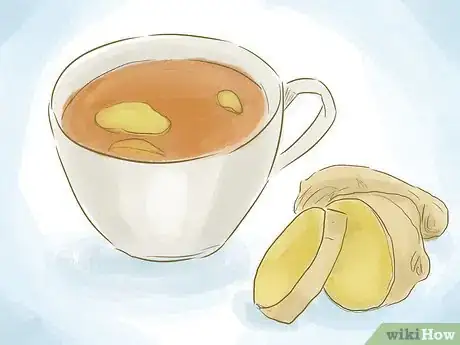
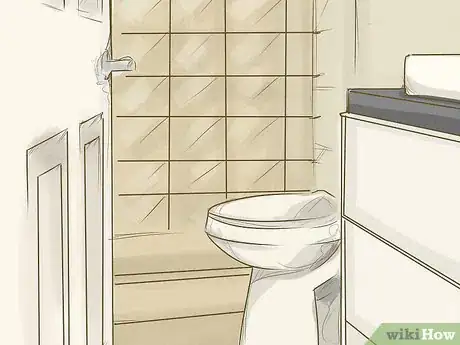
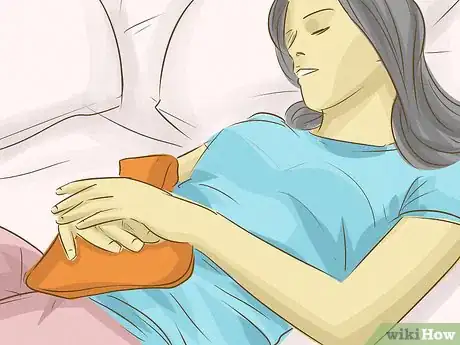
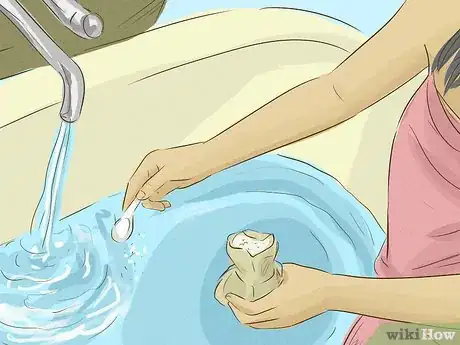

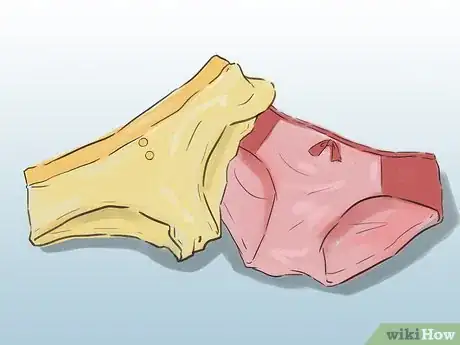

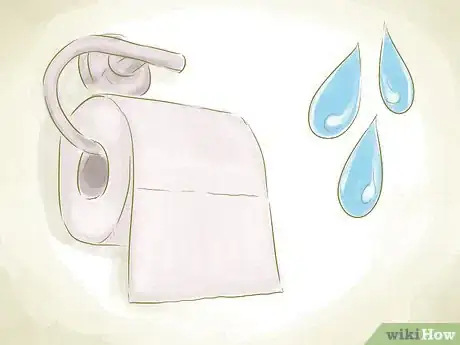

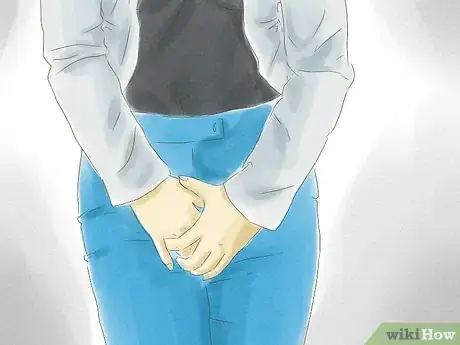





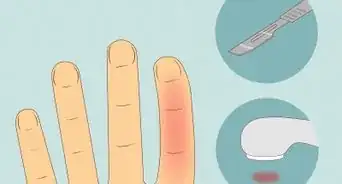





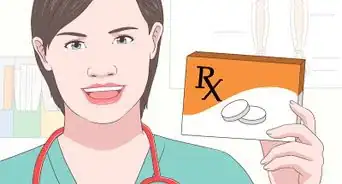

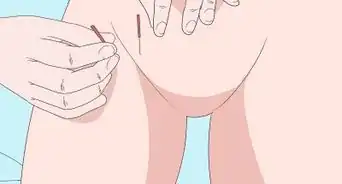
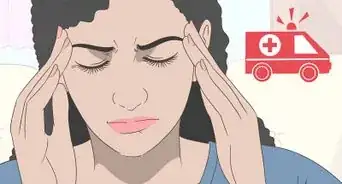













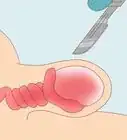




































Medical Disclaimer
The content of this article is not intended to be a substitute for professional medical advice, examination, diagnosis, or treatment. You should always contact your doctor or other qualified healthcare professional before starting, changing, or stopping any kind of health treatment.
Read More...